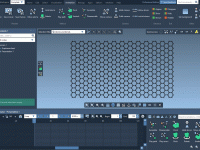Speed Up Your Molecular Visualizations with Custom Visual Presets

Creating clear and expressive molecular visualizations can be a time-consuming task. Whether you’re working on a presentation, preparing figures for publications, or simply exploring a structure, it often involves repetitive steps: selecting atoms, applying representations, choosing color schemes, adjusting views,…













